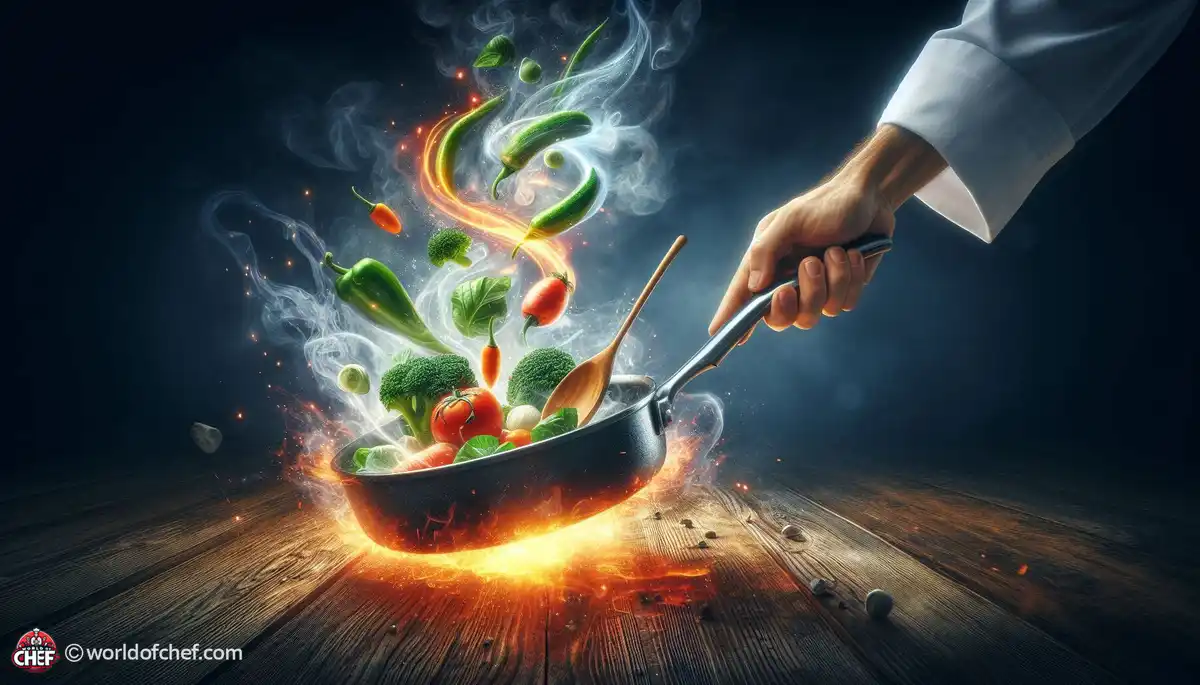
Simmering with Spices: Infusing Flavor into Your Dishes
Emery Donley - Oct 8, 2024 - 8 min read


Sauteing is an art of cooking, so ancient and revered for its delicate touch of heat and timing in bringing out flavor and texture from the ingredients. Essentially, sauteing involves rapidly cooking food in a little oil or fat over very high heat. One of those kitchen skills that everyone should master at home, perfecting basic steps leads to ultimate mastery of culinary arts.
Heat is the secret to a good saute. When properly cooked, the intense heat from the pan caramelizes a beautiful crust on the food's surface, retaining its flavor and moisture and creating a delightful golden crust. Too much heat burns the ingredients, while too little leaves the ingredients limp and soggy. The secret to achieving that golden brown finish is all about the right balance.
It's all about timing in the sauteing process. Whether it's the addition of each ingredient to the pan or how to mix everything once they're all in place, the difference between cooking a perfect dish and turning out a disappointment is achieved. Add ingredients in sequence, beginning with those having the longest cooking time. Finally, delicate herbs and aromatics come last: each ingredient cooked just long enough and not too little or too much.
Sauteing, whether with butter, lard, or one of the other oils that you use to cook a dish, has a final product which will be entirely determined by the oil selected. Every oil has its own smoke point, and it is this smoke point which defines when an oil starts breaking down and to begin emitting smoke. There's also oil with a smoke point that is high in case, for instance; you need to sauté something at a fairly high temperature without burning: examples of such oils would include vegetable or peanut oils. Then there are the others, which cannot reach that level of heat- such as olive or sesame oils that are best employed for lower heat methods of preparation.
Oil is not only a medium for cooking but also gives flavor and texture to sauteed dishes. The right oil can add depth and richness to your food, and it helps in achieving that perfect crispy exterior. Experimenting with different oils can open up a world of possibilities, allowing you to customize your dishes to suit your tastes and preferences.
While oil is one of the key elements to sauteing, a good balance between flavor and health is necessary. If one chooses healthier oils such as avocado or coconut, for example, then that is going to cut the total calorie and fat intake while still maintaining flavor. Even using a minimal amount of oil and incorporating copious amounts of fresh herbs and spices can make it that much more delicious and nutritionally beneficial.
The core of sauteing is the Maillard reaction: a highly complex chemical reaction that develops between proteins and sugars as they're cooked at elevated temperatures. That's how the deep flavor and attractive golden brown appearance of truly sauteed dishes get developed. In understanding what makes up this science in the Maillard reaction, you'll learn how to harness this to create culinary delights filled with flavor and aroma.
Achieving even heat distribution is the most critical thing for ensuring that your ingredients get evenly cooked with a uniform color and texture. Because of this reason, it is very crucial to make sure that your pan gets enough preheating time before adding in your ingredients. A hot pan makes sure that a strong sear will happen and helps in preventing sticking of foods; therefore, perfectly cooked dishes will occur every single time. Lastly, an individual will find that employing a heavy bottomed pan, which allows for efficient heat retention properties, assists in maintaining constant temperatures while the food cooks.
After you have cooked your sautéed meal to your liking, ensure it rests before serving it at the table. Resting allows the remaining heat in the food to distribute through it, meaning that all the juices stay in there and the dish remains delicious. If not rested, the moisture would be lost, and this would ultimately leave you with a tasteless and dry dish. So, be patient and wait until your sauteed inventions are ready before biting into them.

Emery Donley - Oct 8, 2024 - 8 min read

Russell Comeaux - Oct 8, 2024 - 8 min read

Walter Backus - Oct 7, 2024 - 8 min read

Samantha Thames - Oct 7, 2024 - 6 min read